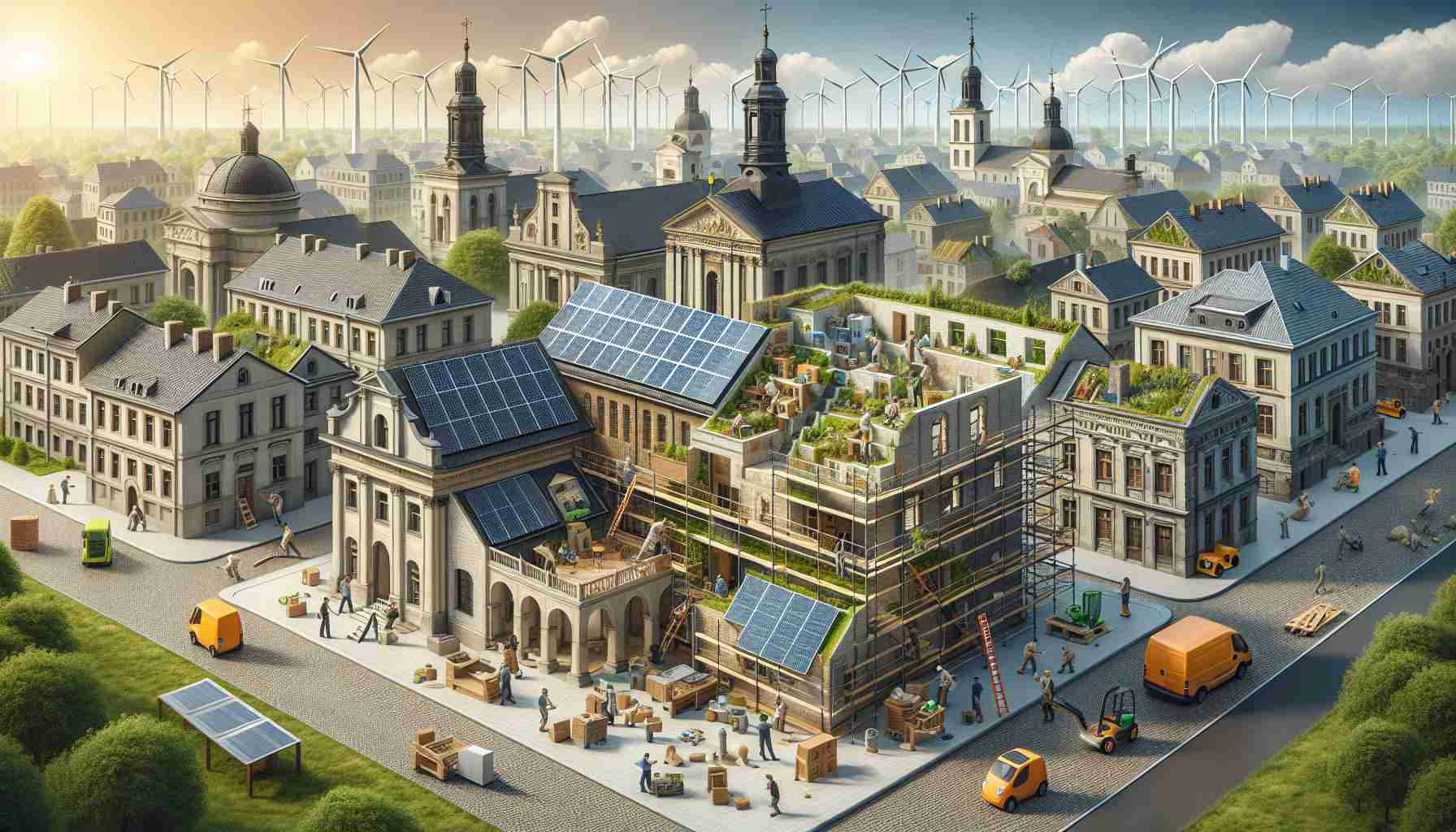The Transformation of Heritage Structures for Environmental sustainability
A wave of progressive action has been sweeping through the realm of architectural conservation, with a focus on rejuvenating historical edifices to combat the pressing climate crisis. Instead of dwelling on the restrictions posed by planning controls, a new narrative is emerging—one that envisions a harmonious blend of past and future.
Unlocking the Potential of the Oldest Building Stock
The United Kingdom stands as the steward of Europe’s oldest building stock, boasting over 11 million properties in England and Wales alone. Repurposing these historic homes holds the key to unlocking a substantial 30% reduction in carbon emissions, a goal outlined in the Sixth Carbon Budget. The sentiment echoed by the public, with a resounding 87% in favor of repurposing over replacing.
A Blueprint for Progress
In a bid to provide clarity amidst the haze of permissions, Historic England has introduced fresh guidelines on enhancing energy efficiency in historic buildings. With a focus on decarbonization and enhanced energy efficacy, the guidelines aim to demystify the need for listed building consent and streamline the adaptation process.
Pioneering a Sustainable Future
Evolving historic structures into climate-resilient entities is not a question of feasibility but one of methodology. By taking informed, appropriate action in a sensitive manner, every heritage building can contribute to the larger mission of environmental sustainability. As the tide shifts towards a greener future, the architectural landscape is poised to witness a significant transformation—one that embraces the heritage of the past while championing the sustainability of the future.
Embracing Sustainability Through the Revamping of Historic Buildings
Exploring the Untold Potential
The transformation of heritage structures for environmental sustainability goes beyond just reducing carbon emissions. It also presents a unique opportunity to preserve cultural heritage, revitalize communities, and create sustainable, energy-efficient spaces for future generations. While the focus has mainly been on energy efficiency, there are additional benefits such as preserving historical significance and reducing urban sprawl through adaptive reuse.
Key Questions and Answers
1. What are the main challenges associated with revamping historic buildings for sustainability?
Revamping historic buildings often poses challenges in maintaining the balance between preservation and modernization, navigating complex regulatory frameworks, managing costs, and ensuring the structural integrity of the heritage structure.
2. How can we overcome challenges associated with revamping historic buildings for sustainability?
One way to overcome these challenges is through thorough planning, stakeholder engagement, utilizing innovative technologies, and seeking expert guidance from conservation professionals and sustainability experts.
Advantages and Disadvantages
Revamping historic buildings for sustainability offers numerous advantages, including reducing environmental impact, preserving cultural heritage, and enhancing the overall aesthetic and value of the built environment. However, some disadvantages include higher initial costs, potential conflicts between preservation and modern needs, and the risk of unintended consequences on the structure’s integrity.
Addressing Controversies and Key Challenges
A key controversy in revamping historic buildings for sustainability lies in finding the right balance between preserving the original character of the structure and implementing modern sustainability measures. This often leads to debates on the authenticity of interventions and the trade-offs between conservation principles and sustainability goals.
Looking to the Future
As we navigate the complexities of revamping historic buildings for a sustainable future, it is crucial to adopt a holistic approach that considers environmental, social, and economic factors. By striking a balance between preservation and innovation, we can ensure that our heritage structures continue to stand as beacons of sustainability for generations to come.
For further information on sustainable architecture and historic preservation, visit Sustainable Heritage.













